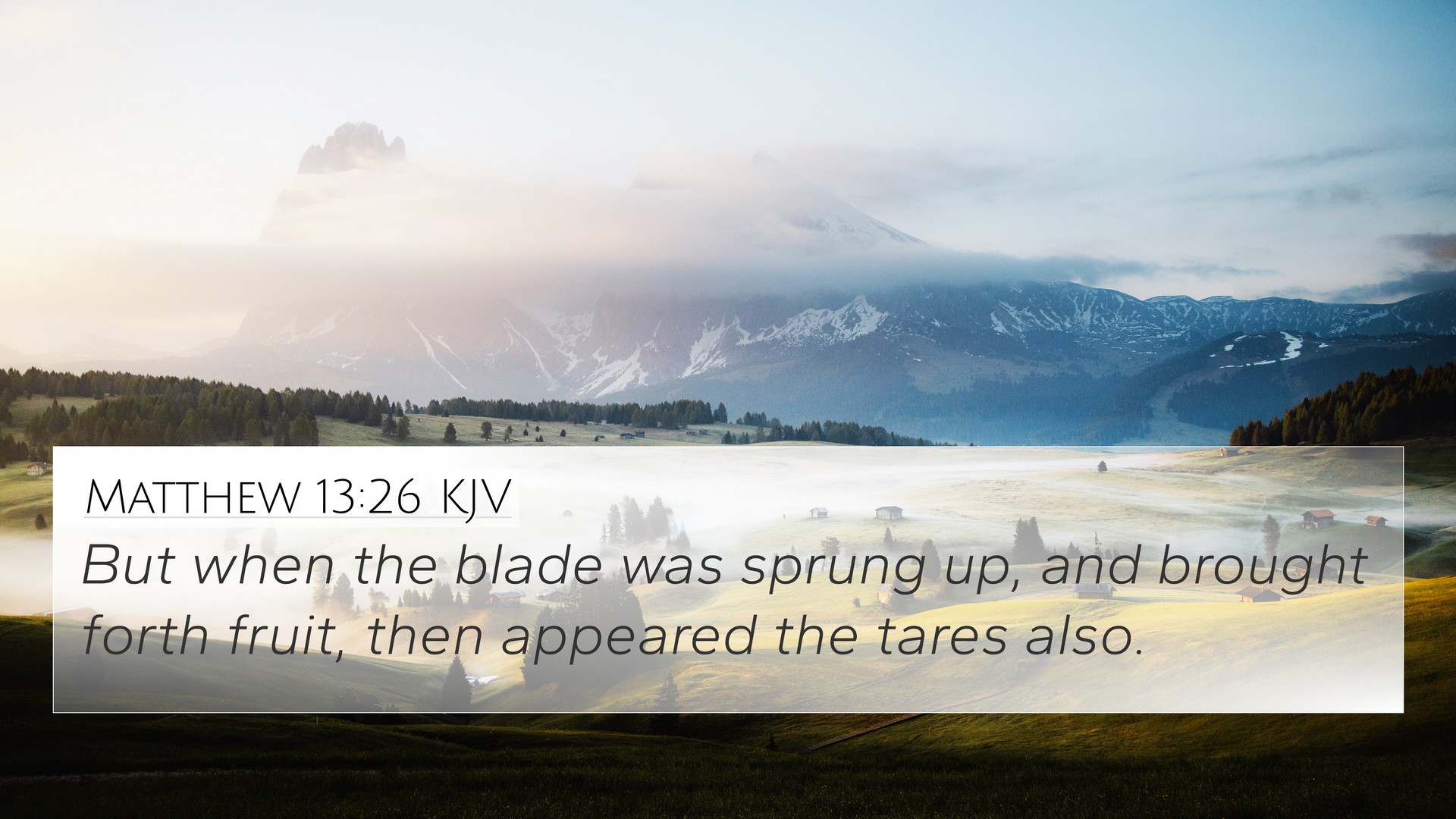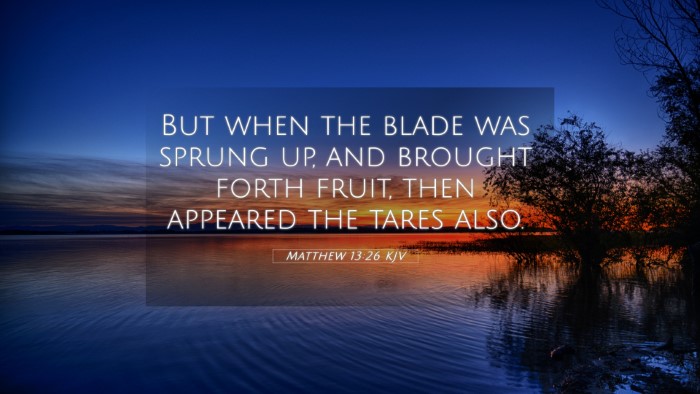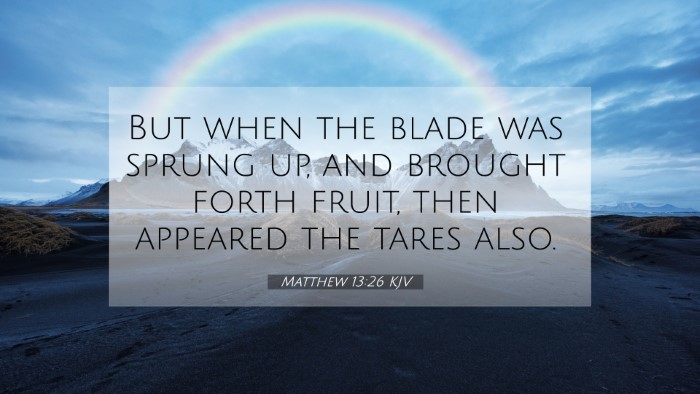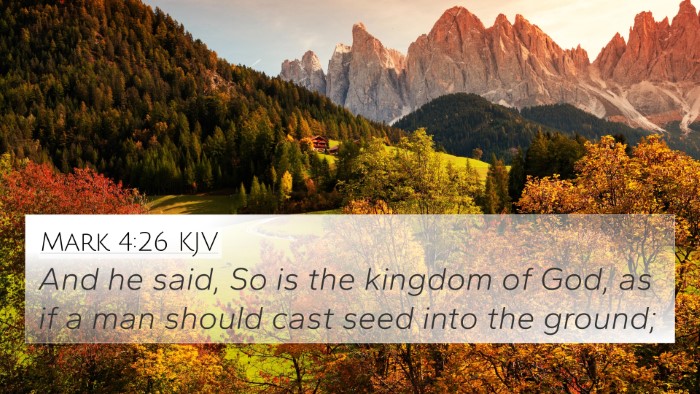Understanding Matthew 13:26
Verse Context: Matthew 13:26 states, "But when the blade was sprung up, and brought forth fruit, then appeared the tares also." This verse comes from the Parable of the Wheat and the Tares, where Jesus illustrates the coexistence of good and evil in the world, culminating in the final judgment.
Summary of Meaning: In this parable, the wheat symbolizes the children of the kingdom—those who are true believers—while the tares represent false believers or the wicked. The growth of both the wheat and the tares together until harvest serves as a metaphor for the present age, where believers and non-believers live side by side.
Commentary Insights
Matthew Henry's Commentary
Henry emphasizes that the "blade" signifies the initial growth of faith among believers, implying that spiritual growth takes time. The appearance of the tares signifies the presence of evil that is often not discernible until the time of reaping. He points out the patience required in waiting for the final judgment, where true righteousness will be separated from falsehood.
Albert Barnes' Commentary
Barnes interprets the tares as representing those among the Church who profess faith but do not possess it. He notes that their existence alongside wheat invites the faithful to remain vigilant and patient, as the ultimate judgment will reveal the nature of each individual’s faith. Barnes emphasizes the importance of not attempting to eliminate the tares prematurely, as this could harm the true wheat.
Adam Clarke's Commentary
Clarke offers a deeper look at the agricultural implications of the parable, explaining that the tares closely resemble wheat, making them hard to identify before harvest. He suggests that this deception reflects the struggle between truth and error in the world. Clarke reinforces that the harvest symbolizes the Day of Judgment when God will sort the righteous from the wicked.
Cross-References with Matthew 13:26
- Matthew 13:24-30: The entire parable presents the context for understanding the coexistence of good and evil.
- Galatians 6:7: "Do not be deceived: God is not mocked, for whatever one sows, that will he also reap." This verse parallels the theme of reaping what one sows.
- John 15:2: "Every branch in me that does not bear fruit he takes away," indicating God’s judgment over false believers.
- Revelation 14:15: This verse speaks about the harvest and the gathering of God's people, emphasizing final judgment.
- 2 Peter 2:1: Highlights the presence of false teachers, akin to the tares among the wheat.
- Matthew 7:22-23: "Many will say to me, ‘Lord, Lord,’... and then will I declare to them, ‘I never knew you.’" Relates to the false claims of faith as represented by the tares.
- James 3:18: Discusses the fruit of righteousness, which resonates with the idea of true believers bearing good fruit.
- Romans 2:6: "He will repay each person according to what they have done," correlating with the judgment theme present in the parable.
- Matthew 13:40: Further elaborates on the separation of the wheat and tares at the end of the age.
- Matthew 25:32-33: The sheep and the goats motif reinforces the final judgment of separating the righteous from the wicked.
Thematic Connections
The themes of judgment, coexistence of good and evil, and the growth of faith are explored not only in this verse but also resonant throughout scripture. Understanding these themes can enhance one's grasp of essential Bible truths.
Conclusion
Matthew 13:26 serves as a crucial reminder of the spiritual realities of living in a world where good and evil coexist. By utilizing tools for cross-referencing such as a Bible concordance or a Bible cross-reference guide, one can explore deeper meanings and connect this verse with others throughout the Bible, enriching their understanding of God's Word.
Ultimately, this parable encourages believers to remain steadfast in their faith, trusting that the Lord will distinguish between the righteous and the wicked in due time.



